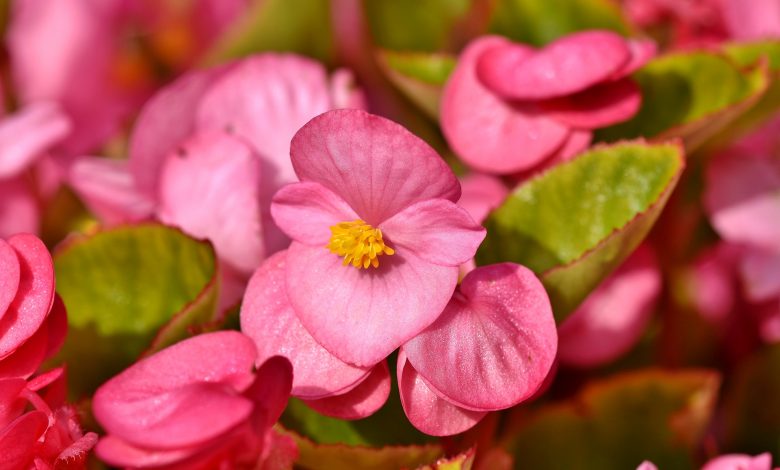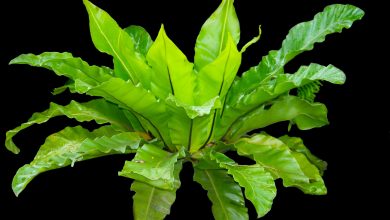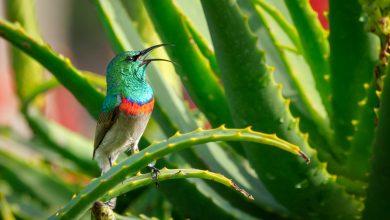How to Create a Low Maintenance Garden

As one might expect, the rewards are often proportional to the efforts that one puts in. With gardening, that effort is usually a whole lot. It needs attention, care, grooming, and cleaning. You need to feed it specialized products and make sure that no foreign threats are able to get in and damage it.
That being said, it doesn’t always have to be like this. With a bit of careful planning and a little ingenuity, you can create a stress-free garden that practically cares for itself. Although, you do need to put in some effort at the start to get things up and running, it’s just a little. After that, you can sit back, relax, and watch as your garden gives you maximum satisfaction for minimal effort.
Planning
Before you actually do any planting, you need to plan a few things out. Unfortunately, your garden is more than just the flowers and plants you have dotted around the place in the soil. It is the landscape, the structures, the grass, the light, wind, and everything in between. Your garden is three dimensional, so you need to plan for this.
Basic Landscape
Your primary concern should be your grass. It takes up quite a large portion of your garden’s ground-space, and yet so often does it go unplanned for by gardeners looking to get things done quickly. A complicated, patterned patch of grass can take forever to mow if you’re trying to maintain it. So instead, opt for a large simple shape, like a classic rectangular lawn, or if you’re feeling a bit more creative, a circle. Doing this provides you with the same effect as having an over-the-top lawn, without all the fuss that comes along with it.
This same philosophy applies to your flower beds. Keep it simple, with straight or slightly curved edges. You need to make sure that the shape suits the overall tone and style of your garden, so choose a uniform shape type and stick to it.
Structures and Decorations
Keep the material you use simple. If you’re planning on having raised beds, just use some good old-fashioned stone instead of oak, for example, which needs to be varnished and maintained on the regular.
The same goes for any other structures you have in your garden too. If you’re planning on having a shed, don’t create some fortress fit for a carpentry king. Instead, opt for something small and compact that can fit the tools you need to store.
This ruling further applies to any decoration you have, like patios or statues. Rather than laying decking that needs to be looked after by hand, use paved stone for your patios. It can be cleaned with a quick blast from a power washer, instead of having to get down on your hands and knees to scrub it.
Statues and fountains are a great low maintenance way to enhance the aesthetic of your garden. You are going to have to clean them eventually; however, this is infrequent enough that you can get away with it. Just be sure to place them in a convenient spot and not somewhere that you need to move it from often.
Setting Up for Low-Maintenance Care
When it comes to positioning the aspects of your garden, the keyword is convenience. You need to plant your flowers and plants somewhere that is both close to your water source and close to the shed with all your tools. It’s a compromise as to what you prefer, but generally, so long as you aren’t carrying tools that are too heavy, opt to place them somewhere closer to the water.
Unless, that is, if you are installing a sprinkler system, which you really should be. Now, a caveat here is that installing this kind of system requires quite a bit of time and effort. You need to either have the know-how to install it yourself or pay a professional. However, the result is more than worth it. The main part of maintaining a garden is keeping on top of watering, but if you automate that process, what is there left for you to do? Very little is the answer.
You do have to keep an eye on it to make sure that it doesn’t break or malfunction, but even that is far less hassle than watering your plants several times per week.
Low Maintenance Plants
After that, all you have to consider is what is actually going in the ground. It can be a tricky little balance to get right. You need to make sure the flowers are pleasing to look at and easy to grow, and you need to make sure that your choices are hardy so that you don’t have to go and pot them or maintain them during bad weather.
Ideally, your flowers don’t require any type of particular soil, mulch, or fertilizer, either. This is a lot to ask for, but there is no shortage of great looking, easy to grow, and hardy plants out there to take the burden of gardening off of your shoulders.
It needs to be reiterated, though, that you need to plan this tactically. You can’t go mental, just tossing whatever seeds you see into the ground – the result is an uncoordinated mess that looks like a rainbow crashed face-first into your lawn.
Instead, get a list of candidates and a sketch of your garden. Consider the shape and layout, and then the colors of the flowers. Plan what should look nice during the ideal months of the year, setting well contrasting colors against one another, and work from there.

Chinese Evergreen
This is more of a house plant than it is a garden plant, but it still deserves a hearty mention. The Chinese evergreen is a potted piece of shrubbery that can deal with drought or being overwatered surprisingly well. It can thrive in poor conditions, so you don’t need to worry about it dying on you out of the blue.
There are a ton of different types of the plant to choose from, all different in style. So chances are there is some type of Chinese evergreen that belongs in your home.
Coneflowers
These flowers are more partial to the garden than the aforementioned Chinese evergreen. It is a super hardy plant that does well both in the full sun and the partial shade. It is also fairly resistant to drought, so you are going to be hard-pressed to mess up growing these lot.
Cornflowers are really good at attracting birds and bees, making them a great companion plant to sprinkle around the place if you don’t want to dedicate an entire plot to them.
The flowers are available in a large variety of colors, with ranging hues and intensities, so chances are, you have a place for them somewhere. It is a particularly pretty flower, with a big bulbous flowerhead that has nice large petals.
Daylilies
Daylilies are the lazy gardener’s perfect dream. They can survive whatever light you give them, as well as both droughts and floods. On top of that, they can also survive salty conditions. They can continue to grow in your garden for years on end with barely any maintenance, which is the whole spirit of this article.
You can get types that sprout flowerheads ranging in colors from reds, to oranges, to purples, but the nicest looking by far is the old-fashioned yellow. These, too, have nice large flowerheads and look great when planted smartly.
Cosmos
Cosmos have a beautiful name, and that spirit and beauty are matched by their appearance. As implied, cosmos resemble the cosmos, looking like a beautiful field of pink and violet stars among the greenery of your garden. There is almost an air of surrealness to the flower, and you are going to be hard-pressed to find something that looks better.
They are small and grow in numbers, so they makes for a great lining for a path, as well as a bed flower. They are also super hardy and can thrive in pretty much any condition. Shade or sun, drought or flood, acidic or alkaline, this plant doesn’t really mind. On top of all that, it reseeds on its own every year, so the thing practically just takes care of itself.
Agastache
Agastache is a perennial that sort of looks like a bigger version of lavender. It has a long stalk and a chunky purple top that looks like corn.
Despite its unusual appearance, agastache gives off an incredible aroma, similar to lavender. So it can bring an extra sensory level to your garden that wasn’t there before. The smell is so good, in fact, that it actually attracts a whole host of wildlife, from bees and birds, to butterflies, and everything in between.
It is a perennial that does just fine on its own, even if left neglected for a few weeks. It can deal with both frost and excessive heat very well.

Coreopsis
Coreopsis is often referred to as a pot of gold – one look and you can see why. The joyous little flower grows in abundance, quickly spreading and taking over the patch that it is grown upon. There are plenty of different colors available, but the traditional is yellow. You can get them in the annual or perennial variety, allowing them to serve your needs to the utmost.
The flower requires little to no maintenance. All it asks is that you keep an eye on it, which if you plan on lounging about in the garden, you should be doing anyway.
Yarrow
Yarrow may be a bit of a hit or miss plant for you. It does look a bit strange, with long thin stalks and a flowerhead that almost resembles a piece of cauliflower. That being said, if done well, the plant can look great in a garden.
It is a wildflower, which means it is one tough son of a gun. It can survive all sorts of different conditions and should do just fine when left to its own devices.
It also has a long bloom season, so it is value for money – meaning, if you don’t mind the appearance of the flower, it is a great addition to any garden.
Ornamental Grass
Essentially, it’s a type of shrubbery. There are a million and one different types to choose from, each with its advantages and disadvantages, but the common denominator among them is that each looks great. Even spaced out in the soil, ornamental grass just looks lovely in a garden for some reason – perhaps it’s the neat looking nature of the plant, or perhaps it’s some unknown force entirely. Be sure to get a professional opinion on what type to go with, though, before you plant anything, as different types thrive in different conditions.
Once it’s in the ground, ornamental grass needs very little looking after. A bit of water, and maybe a trim every once in a while, and you should be good to go.

Lantana
Lantana is quite an exotic looking flower, despite being easy to care for. It has a lovely bit of shrubbery with nice long green leaves and a bushy bloom that makes any lazy gardener’s heart jump with joy.
It serves as a natural contrast, as it can bloom flowers of different colors – white and purple, for example – on the same plant. Meaning, not only is it hassle-free to grow, but it also takes some of the effort out of planning for you too.
However, the flower does command a little bit more effort from you than other entries in this article. It does not handle the frost well at all, so you may need to bring it inside during the winter. For this reason, you’re better off planting this one in a pot as opposed to the ground.
Hosta
Hosta is similar to ornamental grass in that it’s just a big blob of green. It’s a good-looking blob, though. It comes in all sorts of different shapes and sizes, with different leaves and patterns, some of which actually look incredible.
You can get big bushy types with green leaves that have patterns of white streaking through them, which makes for a very interesting piece of shrubbery to use over just a common leafy green.
It is a hardy old soul and can thrive in nearly any condition, meaning it ticks the low maintenance box for use too.
Peace Lilies
Peace lilies differ quite a lot from daylilies. For starters, it looks far better in white than yellow or orange, and it makes for a great house plant. It has plenty of shrubbery, and its bloomage is limited, making it a great way to spruce up an otherwise boring room.
It can thrive in almost any condition. You could plant it in a fish tank, and it would probably still grow. Best if you don’t do that, though.
As a bonus, peace lilies also filter toxins from the air, meaning it’s actually looking after you more than you need to look after it.
Phalaenopsis Orchid
These flowers are simply stunning – no other way to say it. It can grow quite tall, and it sprouts a circular tube of purple flowers all around it. The flowers look gorgeous, having quite an interesting shape and maintaining a light color with white undertones, meaning it never gets overpowering.
It is a plant that is native to the eastern half of the world, but it is still available plenty here in the west. It thrives in low light, dry conditions, but can survive in other conditions as well.
You can get away with watering this type of plant once per week, or even two weeks at a stretch, meaning you are getting an absolutely gorgeous flower for a little bit of effort and maintenance, which is absolutely worth it.
Begonias
Begonias are another great looking flower that requires next to no looking after. They resemble a rose quite closely, with that iconic circular petal shape that cascades in on itself.
They are available in a wide range of colors and shapes, so with a small bit of shopping, you should definitely find a flower that piques your interest.
They are quite the showy flower, with strong bloomage and large flowerheads. They only requires the odd bit of water, too. So there is once again very little to do in the way of maintenance.
Kalanchoe
Kalanchoe is yet another flower that makes a great potted addition to a living room or kitchen. It has quite a lot of foliage, and its flower heads are small and dainty, yet still pull off looking cute.
The flower is particularly good at retaining water, which is great news for us. It can thrive in dry temperatures or in climates that swing back and forth between cold and hot.
It requires very little care and attention and rewards you with a cutesy little plant that can bring a bit of life to wherever you deploy it.

African Violets
African violets are among the most popular house plants in the world, and that placement is justified. They are stunning looking, almost picturesque at times. They have a little bit of foliage, which serves as a base for the violet flowerheads which grow up above them in a ball, resulting in tiny, yet eye-catching and beautiful flowers.
These little powerhouses bloom multiple times per year, which means that you don’t have to go long without them. They like bright light and the occasional watering, but aside from that, there is nothing to growing this plant.
Wild Lilacs
As a flower, they dominate the purple end of the color spectrum, available in gorgeous magentas and violets. They are quite the showy flower and have a very overpowering bloom that grows into a massive sea of purple fairly quickly.
So long as you give the flowers some sunlight and water them during the summer, you have nothing to fear from it. There’s no pruning or other such nonsense, making them a valid choice for your low maintenance garden.
Mint
Mint is the first and only herb on this list, as well as being the last entry. That is because many herbs do require a bit of looking after, with them needing to be picked and whatnot.
Mint, on the other hand, does not. Not only does the herb look great and smell fantastic, but it grows super-fast without human interference. So fast, in fact, that it is often considered a problem among gardeners, as the roots can quickly take over your garden if you’re not careful.
To counteract this, plant it in a planter or pot isolated from the natural soil, and reap the aromatic rewards of this easy to care for plant.
There’s Not Much to It
With a bit of know-how, and a bit of preparation, growing a low maintenance garden is super easy. We don’t all have time to dedicate on our hands and knees, out back digging, pruning, and watering, so being able to reap the rewards of a nice garden without that allows us all a collective sigh of relief.
Of course, the more effort you put into your garden, the better it is going to look, but you can get away with doing the bare minimum all the same.



